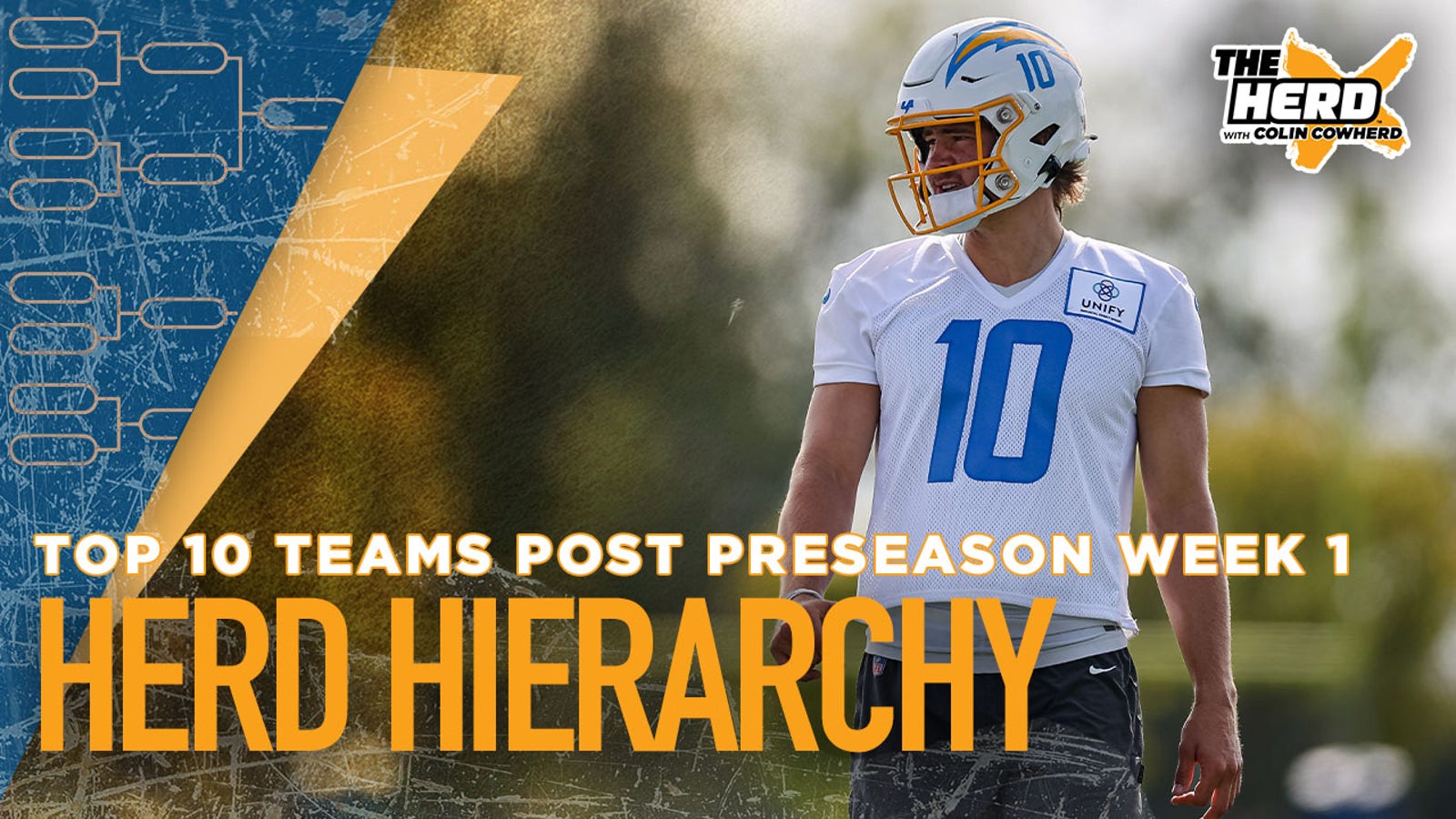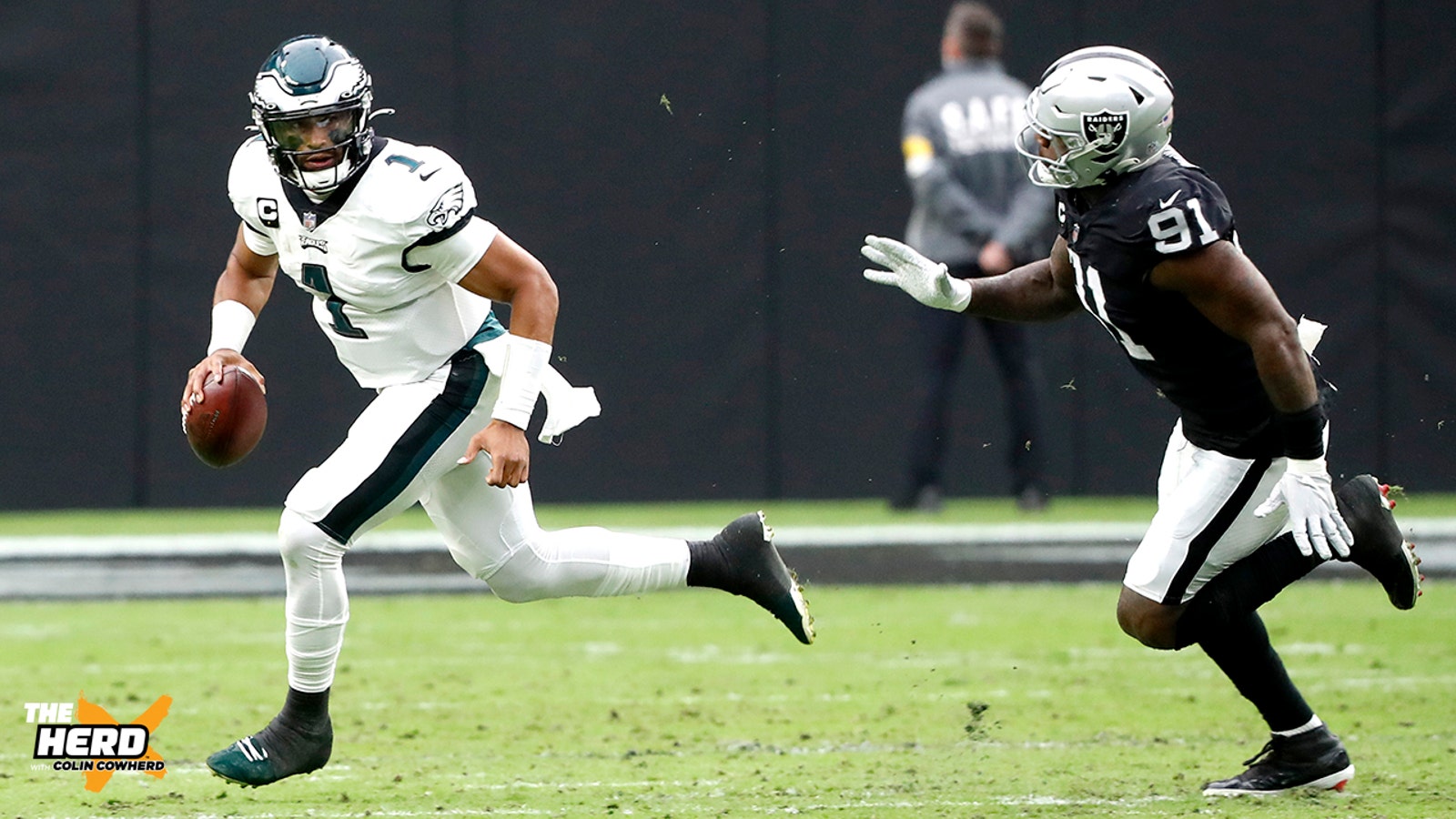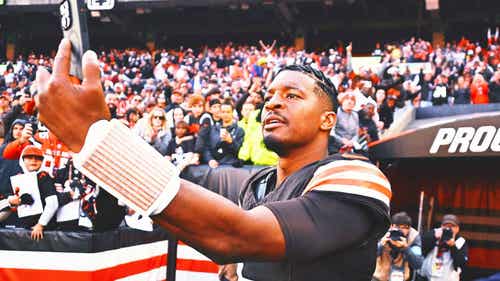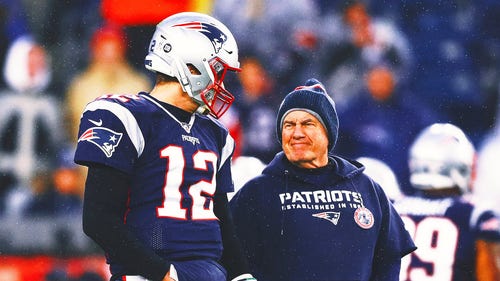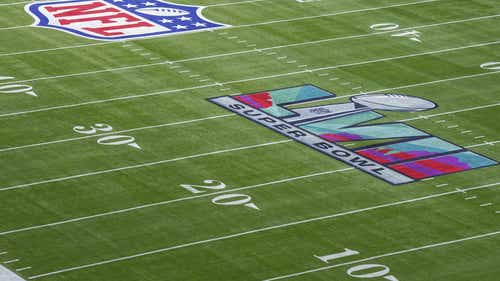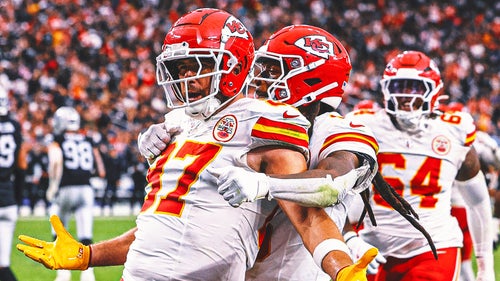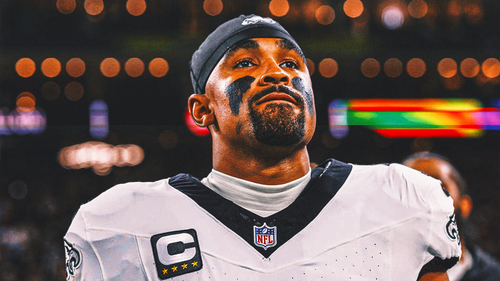
Why Vikings will surprise, Cowboys could disappoint: Warren Sharp's NFL Guide
By Warren Sharp
FOX Sports NFL Writer
Editor's Note: NFL analyst Warren Sharp is joining FOX Sports for the 2022 NFL season. Throughout the year, he'll recap the top games of the week and look ahead to the numbers that can give you a betting edge. In his two-part debut column, Sharp starts with the top 10 trends to know for 2022.
On Monday, we took a look at five things you need to know before you watch and bet on the NFL in the 2022 season.
Now, let's add five more, so you're as informed as possible when the Bills and Rams kick off the new season Thursday, Sept. 8.
6. The Minnesota Vikings have the NFL’s best home-field advantage, but we haven’t seen it a lot lately.
In 2020, there were no crowds and no home-field advantage. The betting market was slow to adjust, so the Vikings fared poorly against the spread (ATS) at home.
In 2021, the Vikings played more road games than home games.
Chargers, Vikings make Colin's Top 10 teams
But in 2022, the Vikings will play more home games than road games and benefit from their crowd. Ignoring the crowd-less 2020 season, the Vikings are 36-18-4 (67%) ATS at home since 2014, the best record in the NFL.
I think their home-field advantage prowess will be on display in 2022.
And there are two other strong reasons to feel optimistic about the Vikings, so let's dive in.
First, Minnesota's new coaching staff. This team has been locked into the fourth-most run-heavy offense with a conservative offensive staff under Mike Zimmer for the previous three seasons.
As a result, the Vikings lost a league-high eight games by one score last season when playing the 10th-toughest schedule. They were also the fifth-most injured team in the NFL.
But out of 61 QBs over the past two seasons, Kirk Cousins is the only one to rank in the top 10 in YPA, EPA and accuracy.
I expect a better offensive output with Cousins throwing more frequently in more advantageous situations, like on early downs.
Secondly, Minnesota's defense should have an easier schedule in 2022.
Last season’s Vikings defense played the No. 2 most challenging schedule of offenses and the No. 3 toughest schedule of quarterbacks. This season, I project that they will face the No. 21 schedule of overall offenses and pass offenses. It’s the fourth-biggest drop in schedule difficulty for any team in the NFL. I think this defense won’t look much worse than last season’s unit, which finished the season ranking league-average. There's even a chance Minnesota's defense might look better.
I expect the Vikings will benefit from their home-field advantage and make a trip to the playoffs.
7. Don’t underestimate the loss of Dallas left tackle Tyron Smith, particularly if the Cowboys don’t replace him with a veteran.
Smith's loss is massive. Here are some nuggets from an article on the injury we posted at Sharp Football Analysis:
Over the past three seasons, on early-down running back runs in the first three quarters, the Cowboys' run efficiency based on EPA with and without Smith on the field shifted sharply:
– No. 1 in the NFL with him on the field (-0.03 EPA/rush)
– No. 31 in the NFL without him on the field (-0.23 EPA/rush)
It’s staggering the impact Smith has brought to Dallas' run game. In detail:
– Smith on the field: -0.03 EPA/rush, 43% success, 4.8 YPC (425 attempts)
– Smith off the field: -0.23 EPA/rush, 33% success, 3.9 YPC (376 attempts)
Injury blow for Dallas' Tyron Smith
Of course, the Cowboys will also be hurt in the pass game. Dak Prescott was worse without Smith on the field, and the absence hurt most when blitzed, against man coverage and on first-down dropbacks.
Let's look at that last category in more detail. The Cowboys' first down passing efficiency with Prescott is heavily impacted by Smith:
– When Smith was on the field, the Cowboys were ninth in first-down passing efficiency
– When Smith is off the field, the Cowboys rank No. 30
8. This season, I will talk more about early-down efficiency than anyone who writes about the NFL.
Other than turnover margin and halftime score margin, there aren’t many stats that correlate closer to victory than early-down efficiency margin. What do I mean by that? Your own offense’s ability to bypass third down coupled with your own defense’s ability to force your opponent into third downs.
However, there is a balance between early-down efficiency and the ability to generate explosive plays. Naturally, you will bypass a third down if you convert an explosive play on early downs. But explosive plays are difficult to hit on, thus you might fail more frequently and be forced into third downs, which we are trying to avoid.
Just look at the difference explosive plays make in a drive. Last season, I evaluated all drives that started at or inside a team’s own 30-yard line.
If such a drive had zero plays that gained 15 or more yards:
4.3% of drives reached the red zone
5.9% of drives scored points
2.2% of drives scored a touchdown
If such a drive had exactly one explosive play (any gain of 15-plus yards):
40.8% of drives reached the red zone
51.0% of drives scored points
28.8% of drives scored a touchdown
The difference is massive! Each drive is far more likely to help score and win a game if the offense can produce just one gain of 15-plus yards on that drive.
Explosive plays clearly help score points at a much higher rate. This concept isn’t novel, but it is eye-opening to see how much it matters using data.
How much does it matter in winning games?
I studied that as well. Teams that make at least two more explosive gains (15-plus yards) than opponents in the first three quarters (fourth-quarter explosives often involve teams trailing big and playing desperately) have won 75% of games since 2020!
Here is how it looks by count over the past two seasons:
At least one more explosive play than their opponent: 323-148 (69%)
At least two more explosive plays than their opponent: 258-88 (75%)
At least three more explosive plays than their opponent: 171-46 (79%)
At least four more explosive plays than their opponent: 110-26 (81%)
What did this look like last season? The top seven teams in explosive play differential over the first three quarters were the Packers, Patriots, Bills, Raiders, Rams, 49ers and Buccaneers.
Know what those teams have in common? They all made the playoffs.
So, when you’re handicapping games this year and watching as they kick off, pay attention to two things you might not have factored in as much before:
– How often teams are skipping third downs on offense
– How many plays of 15-plus yards each team can generate
9. I am a massive believer in incorporating strength of schedule to your advantage.
I spend substantial time analyzing strength of schedule every offseason. My methodology for calculating the overall strength of schedule is to base it on projected win totals for the 2022 season using the betting market, not the prior season's win-loss record.
Let's dive deeper into this concept for the upcoming season.
The teams with the biggest improvement in schedule vs. 2021 (it will be easier) are the Giants, Commanders, Lions, Bears and Jaguars.
The teams with the worst improvement in schedule vs. 2021 (it will be more difficult) are the Bengals, Patriots, Bills, Rams and Broncos.
The offenses with much easier pass defenses to face vs. 2021 are the Jaguars, Giants, Saints, Titans and Colts.
The offenses with much harder pass defenses to face vs. 2021 are the Bengals, Eagles, Packers, Vikings and Rams.
The offenses with much easier run defenses to face vs. 2021 are the Colts, Titans, Packers, Jaguars and Dolphins.
The offenses with much harder run defenses to face vs. 2021 are the Broncos, Steelers, Chiefs, Bengals and Browns.
The defenses with much easier pass offenses to face vs. 2021 are the Commanders, Ravens, Giants, Vikings and Cowboys.
The defenses with much harder pass offenses to face vs. 2021 are the Falcons, Buccaneers, Dolphins, Broncos and Panthers.
The defenses with much easier run offenses to face vs. 2021 are the Colts, Bears, Vikings, Commanders and Patriots.
The defenses with much harder run offenses to face vs. 2021 are the Broncos, Dolphins, Bills, Rams and Cowboys.
These top-five and bottom-five rankings can help you whether you’re trying to bet team futures, player futures or even draft your fantasy team. (I rank all 32 teams for all of these categories and many more in my full 2022 Football Preview)
10. Having a rest edge, particularly late in the season, can be massive.
First, let’s talk about general rest advantages.
This season, 93 out of 272 games will be played with one team having a rest disadvantage. That’s up from 85 games last season, representing 34% of the schedule, the most we’ve ever had.
The teams with the best net rest (number of days of more rest than your opponent in a game, added up throughout a season) are the Bills, Lions, Broncos, Cowboys and Buccaneers.
The teams with the worst net rest are the Packers, Patriots, Texans, Jets and Saints.

Remember, the NFL does not decide who you play, but they 100% decide when you play them.
Thus, the NFL and the NFL only ultimately decides the rest edges and teams in tough spots this season.
Let’s talk about a few interesting schedule rest notes.
Bizarrely, the NFL made three teams each play four games vs. opponents off of a "mini-bye." This happens when you play a team coming off a Thursday night game, so that team has three extra days of prep and rest.
Last year, no team played four opponents off of mini-byes. This year, it’s happening to three teams: the Commanders, Jets and Jaguars.
The Commanders remarkably play four games with three-day rest disadvantages.
In Week 10, the Commanders play the Eagles, who are off a mini-bye after playing Thursday of Week 9. The same happens when Washington plays the Giants in Week 13 (NYG plays on Thanksgiving the prior week), the 49ers in Week 16 (S.F. plays on Thursday of Week 15) and the Cowboys in Week 18 (Dallas plays on Thursday of Week 17).
So, not only is Washington playing four teams off mini-byes; they are playing all four very late in the season.
This season, the Cowboys play six games against opponents who have less than a week to prepare for them.
Only twice in the prior 30 seasons did a team play six games vs. opponents with less than a week to prepare. But now we have one this year.
No other team plays more than four games like that besides Dallas. Keep in mind, last season no other team played more than four games.
The NFL average is 2.6 such games per season.
Surprise teams for '22
There are 43 short-week road games this season, up from 28 last year.
Like many schedule inequalities, these disproportionately hurt bad or poorly coached teams. And like the rest of the schedule inequalities mentioned, a goal should be limiting the occurrence of such situations, not increasing them.
Half of the Eagles’ eight road contests force them onto the road on short rest. Meanwhile, 21 teams play either zero or one short week road game this season.
The four short-week road games the Eagles have are the most for any team in the past 16 seasons.
Finally, let’s look at a few specific rest spots you should circle and why.
Home favorites of 3-10 points since 2015 with a rest deficit have covered just 40.8% ATS (143-game sample) as an average of 5.5-point favorites.
Look at Week 7 for the Lions in Dallas, which falls into this situation. Detroit is off a Week 6 bye, and the game is in a dome, so there are no weather concerns for Jared Goff. Dallas will be off back-to-back games playing the Rams in Week 5 and the Eagles in Week 6. And the Lions are catching 7 points as an underdog. Give me the Lions right now.
Another game I’m circling that falls into this situation? Look at Week 17 when the Vikings are getting 5.5 points in Green Bay. Minnesota will play the Giants at home on Saturday of Week 16 and have one extra day of rest. The Packers will be off a Week 16 game in Miami on Sunday in the Florida heat, and they are already playing that game on short rest, as they’ll play the Rams in Week 15 on Monday Night Football. I’ll take the Vikings.
A final rest edge spot, but one which you should not bet early, comes in Week 15 when the Raiders play host to the Patriots. You shouldn’t bet it now because the Raiders will be off of two brutal opponents in the prior weeks — the Chargers and the Rams — so the spread is likely to adjust, giving you more value after those two games.
The reason you might want to bet it after Week 14? The Patriots play in Arizona on Monday night that week. Arizona is off a bye for that game, meaning the Cardinals will have a rest advantage. New England will stay out West for a few nights before going to Las Vegas on a short week and facing their second consecutive opponent with a large rest disadvantage. That’s because the Raiders are off a mini-bye, playing the Thursday prior. Thus, in Week 14, the Raiders play on Thursday and the Patriots play on Monday. Then they meet in Las Vegas in Week 15. This game presents an excellent rest edge for the Raiders.
NFL analyst Warren Sharp joined FOX Sports for the 2022 NFL season. Throughout the year, he'll recap the top games of the week and look ahead to the numbers that can give you a betting edge.

